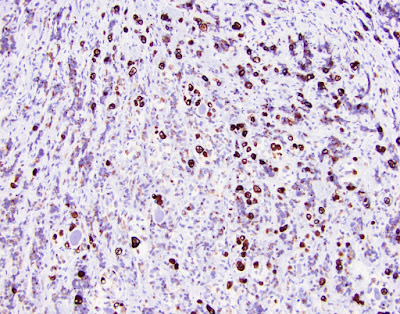 |
| Dr. Miller (note the "brain in a jar" lapel pin) |
Steven Carroll at Medical University of South Carolina
Eyas Hattab at University of Louisville
Alex Judkins at Children's Hospital Los Angeles (pathologist-in-chief)
David Louis at Massachusetts General Hospital
Jenny Libien at SUNY Downstate
David Louis at Massachusetts General Hospital
Jenny Libien at SUNY Downstate
Edwin Monuki at the University of California Irvine
Robert Mrak at the University of Toledo
 |
| Dr. Miller should not be confused with movie director Steven Spielberg |
Amyn Rojiani at Augusta University
Kevin Roth at Columbia
John Schweitzer at East Tennessee State University














